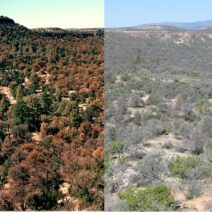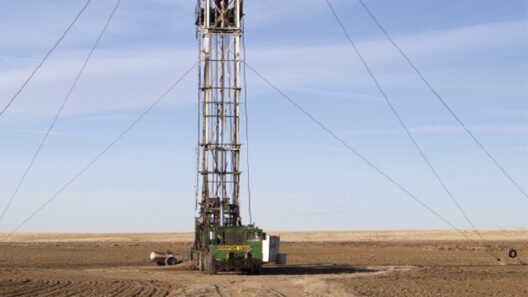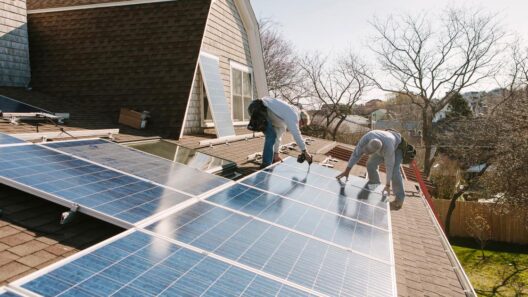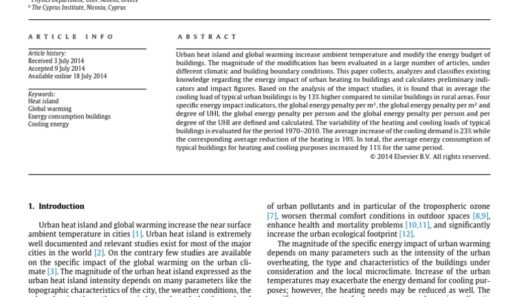The interplay between natural disasters and anthropogenic activities has garnered increasing attention in scientific circles, particularly concerning the intricate relationship between global warming, earthquakes, and volcanic activities. As we delve deeper into the effects of climate change, it becomes evident that rising temperatures—often perceived solely as a catalyst for droughts, floods, and wildfires—may also play an unexpectedly pivotal role in triggering geological phenomena such as earthquakes.
To understand this connection, we first must explore the mechanics of earthquakes. Earthquakes typically arise from the sudden release of energy within the Earth’s crust, primarily caused by the movement of tectonic plates. These plates are constantly shifting; their movements can be slow and imperceptible or catastrophic and calamitous. Conventional wisdom links seismic activity to geological factors, such as the cumulative stress of tectonic forces, but emerging research suggests that climate factors—specifically warming trends—may also contribute to this stress.
Consider, for instance, the melting of glaciers. The ice sheets of Greenland and Antarctica have been losing mass at an alarming rate due to climate change. As glaciers melt, they relieve pressure on the Earth’s crust, which can lead to what is known as “glacial isostatic adjustment.” This process may result in the reactivation of previously dormant fault lines, as the crust readjusts to the new weight distribution. Areas that were once stable might suddenly experience seismic activity as the Earth compensates for these changes. This connection between glacial melt and seismicity offers a novel lens through which to examine the implications of global warming.
Furthermore, as temperatures rise, they influence the hydrological cycle. Increased evaporation leads to greater precipitation in certain regions, altering groundwater levels and affecting the lithosphere’s integrity. Fluctuating water levels can exert pressure on fault lines, further exacerbating the likelihood of earthquakes occurring in previously quiescent areas. Instances of “induced seismicity,” where human activities such as reservoir-induced seismicity from damming rivers or fluid injection from hydraulic fracturing contribute to earthquake occurrences, add another layer to this intricate interplay.
Volcanic activity, too, finds itself intertwined with global warming. The warming climate can affect the stability of volcanoes, primarily through the melting of ice caps and glaciers that shield volcanic edifices. As the pressure from ice diminishes, the potential for eruptions may increase. The 2010 eruption of Eyjafjallajökull in Iceland is a poignant example, where the melting of significant ice contributed to the explosive activity. Rising temperatures might amplify the likelihood of volcanic events as water levels in magma chambers fluctuate, leading to changes in pressure and potentially triggering eruptions.
Examining the interrelation of these phenomena impels us to rethink our conventional understanding of climate change as solely a catalyst for meteorological disasters. The cascade of effects that global warming elicits on geological dynamics should underscore the urgency with which we approach the climate crisis. A warming world is not merely experiencing floods or droughts; instead, we are forging a new era of geological unpredictability.
It is imperative to consider regions specifically vulnerable to this seismic impact. Areas such as the Pacific Ring of Fire, known for their tectonic volatility, could see exacerbated risks from climate-induced changes. Coastal regions where glacial melt occurs may experience heightened levels of seismic activity due to the intertwined nature of geological processes and climatic influences. Consequently, understanding these risks should become an integral part of climate adaptation and disaster preparedness strategies.
The enigmatic nature of this relationship opens avenues for scientific inquiry but also raises questions for policymakers and communities. How should communities anticipate and respond to the dual threats of climate change and seismic activity? Robust models integrating climate data with geological surveys are essential for developing proactive strategies to mitigate the risks associated with potential earthquakes linked to global warming.
Public awareness plays a crucial role in this dynamic as well. Misconceptions about the causes of natural disasters abound; as the linkage between climate change and geological shifts becomes clearer, education and outreach will be vital in reshaping public perception and understanding. Communities must acknowledge their vulnerability to not just flooding or hurricanes but also to the tremors felt beneath their feet.
As the consequences of climate change continue to unfold, the potential for earthquakes and volcanic activity presents a compelling case for immediate action. Addressing the root causes of global warming—such as fossil fuel consumption, deforestation, and unsustainable agricultural practices—remains paramount. By working to mitigate these causes, we can reduce the added pressures on tectonic systems and protect vulnerable communities.
In conclusion, the relationship between global warming and seismic activity is complex and multilayered, warranting a shift in perspective that takes into account the broader implications of climate change. As scientists continue to explore these connections, it is crucial for society to engage in conversations that reflect the gravity of this intertwining crisis. The stability of our Earth, not just as a climate system but as a geological entity, is at stake. Urgency is essential; as we strive for a sustainable future, we must be cognizant of the seismic shifts—both literal and metaphorical—that lie ahead.








